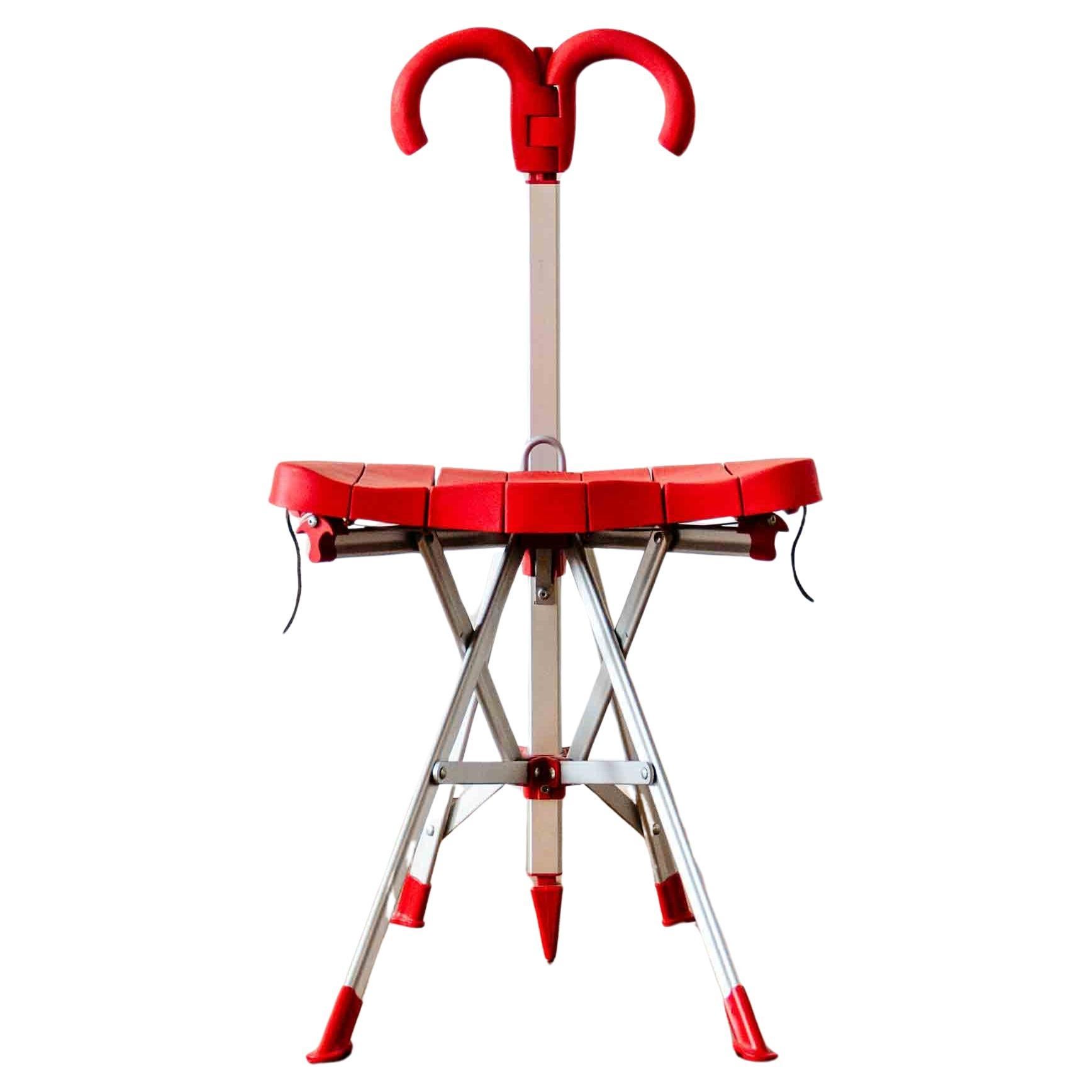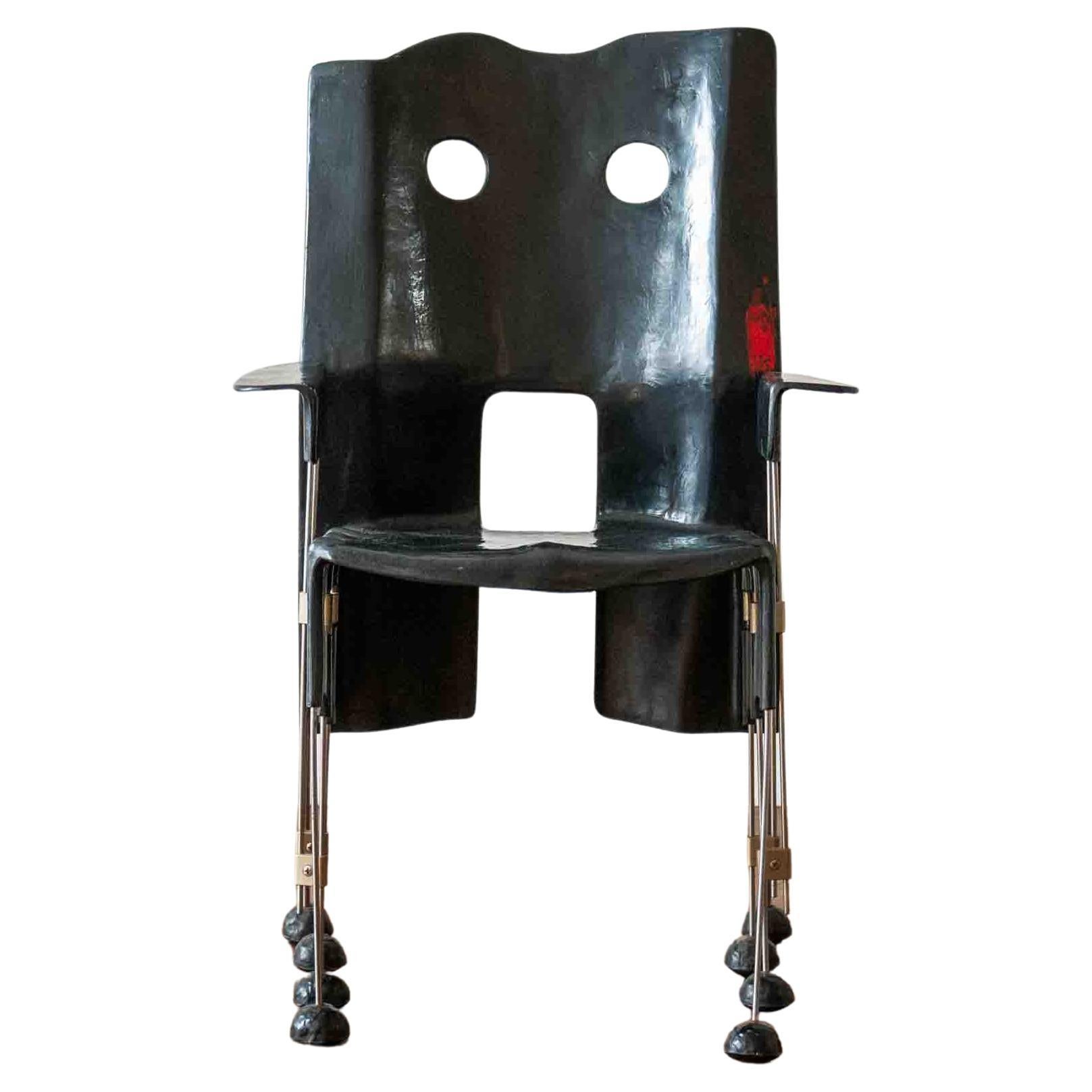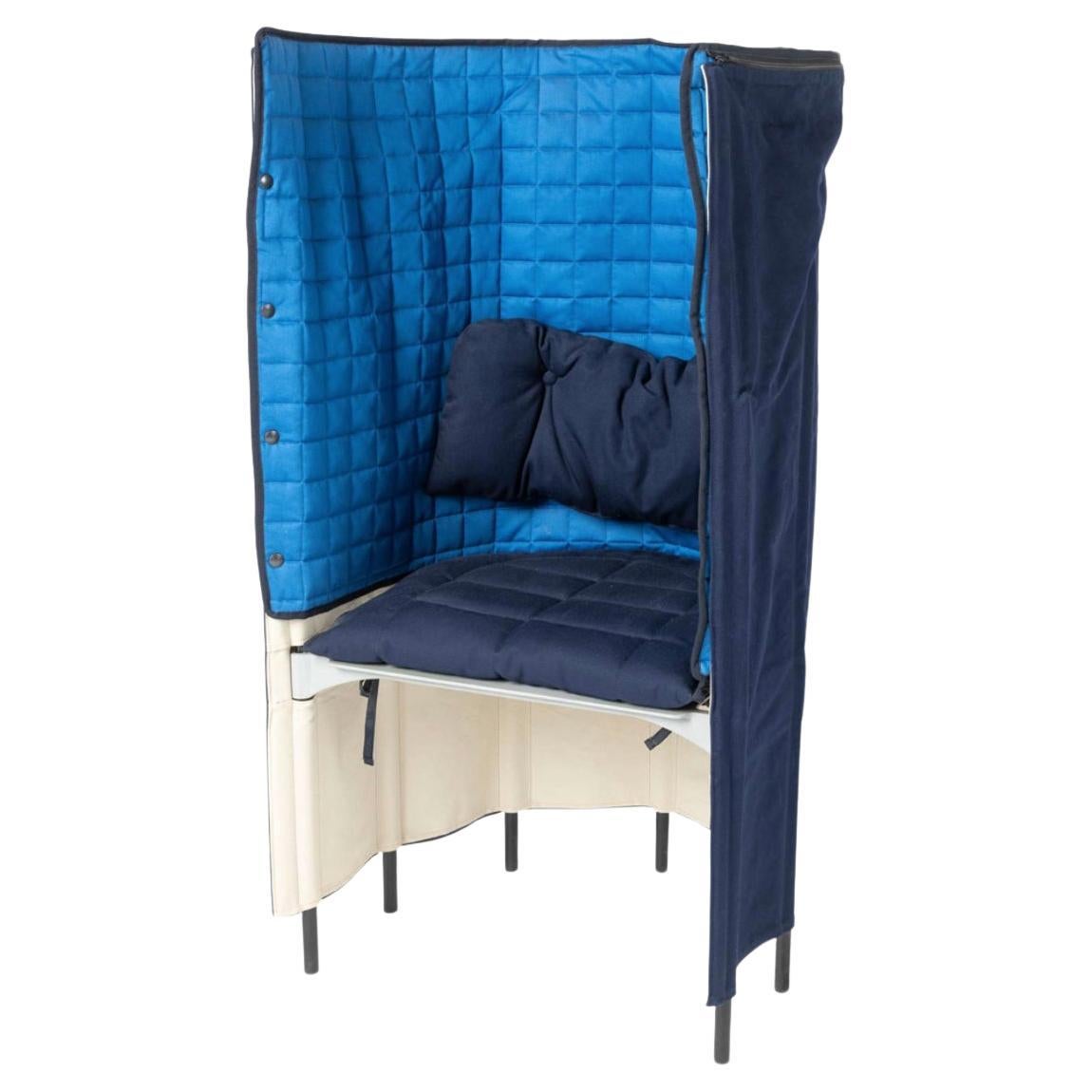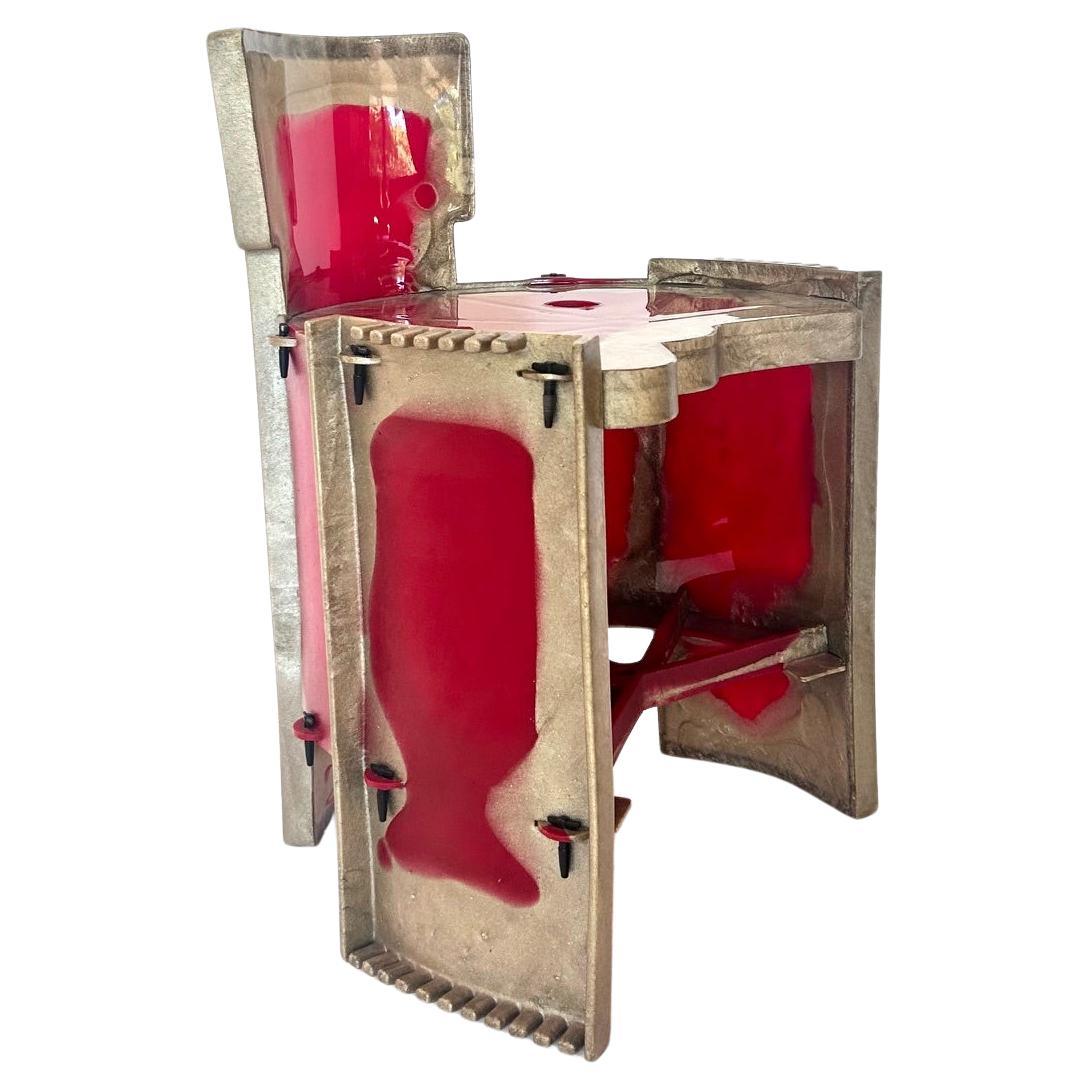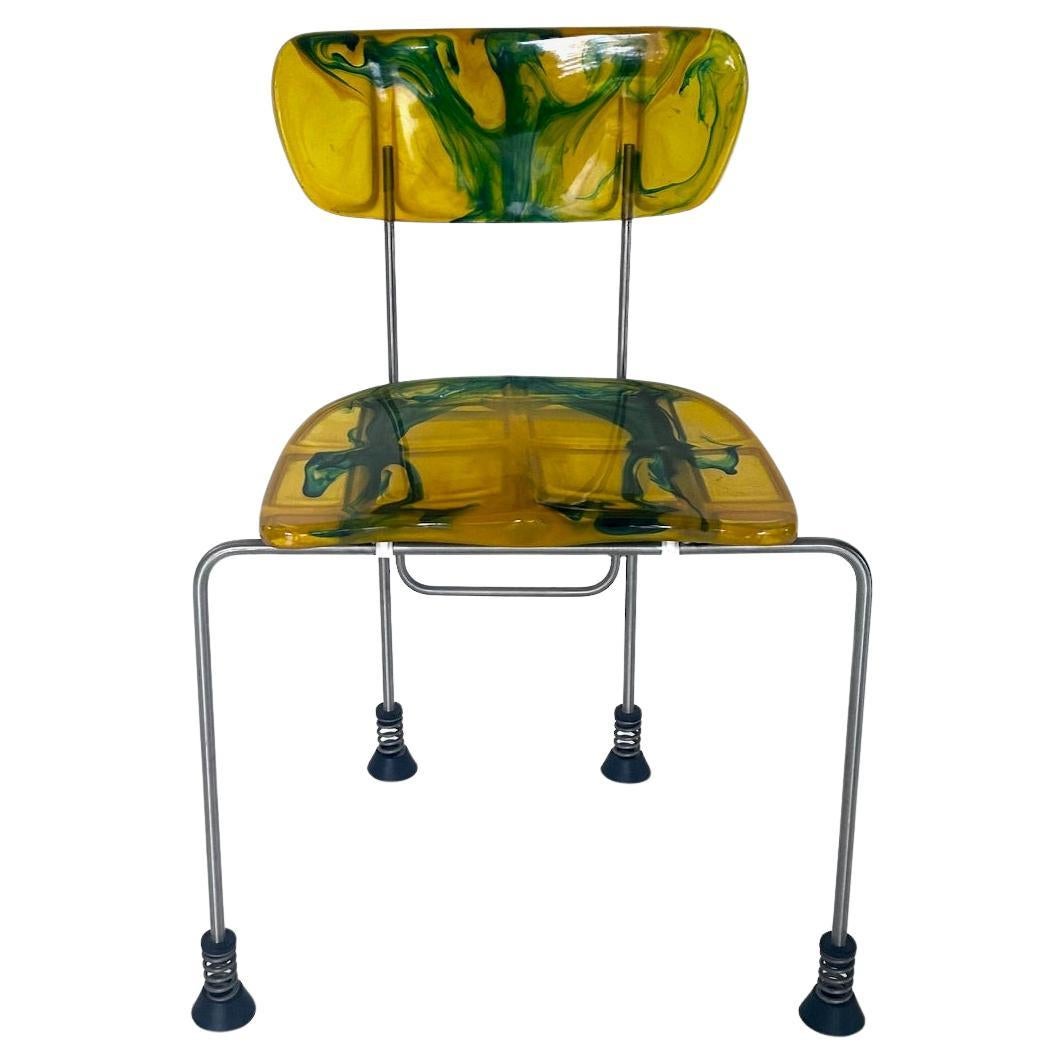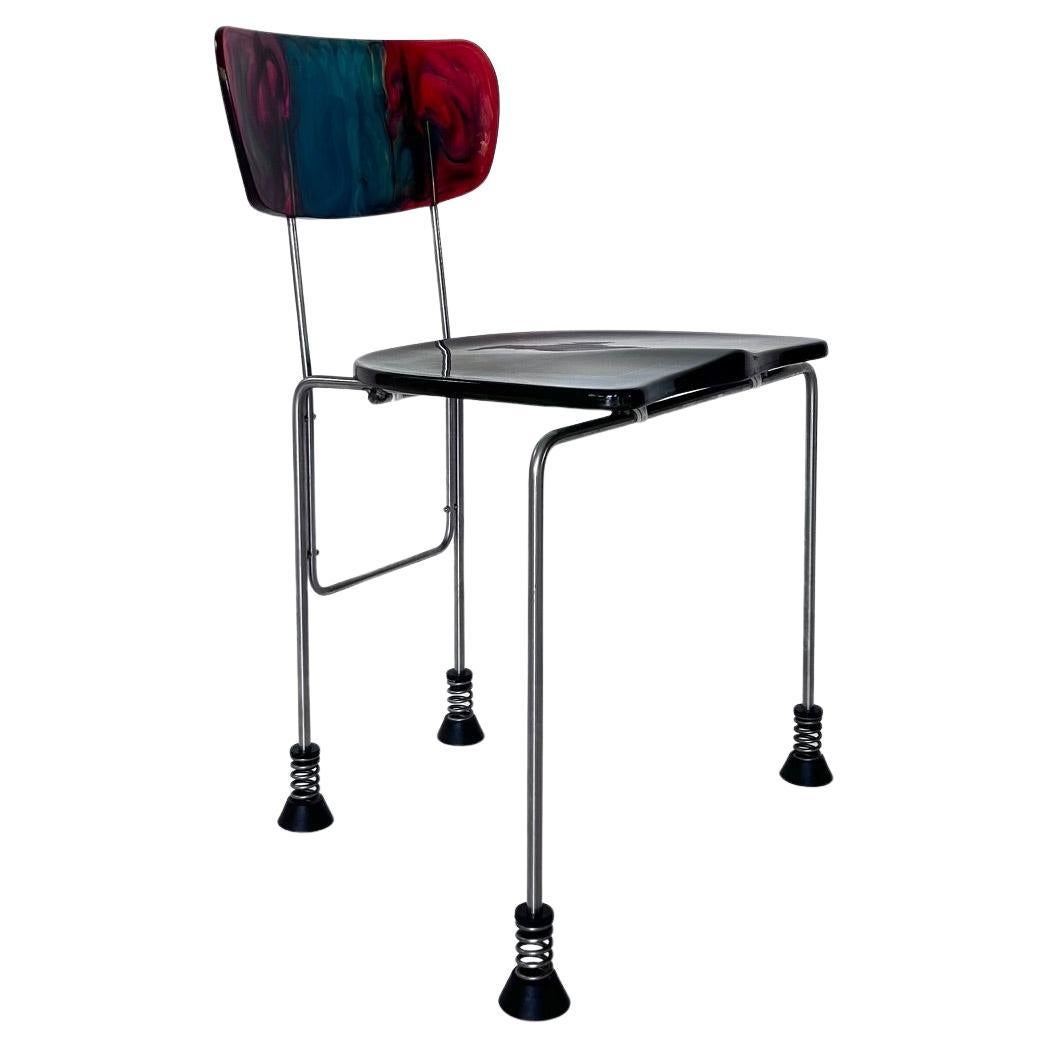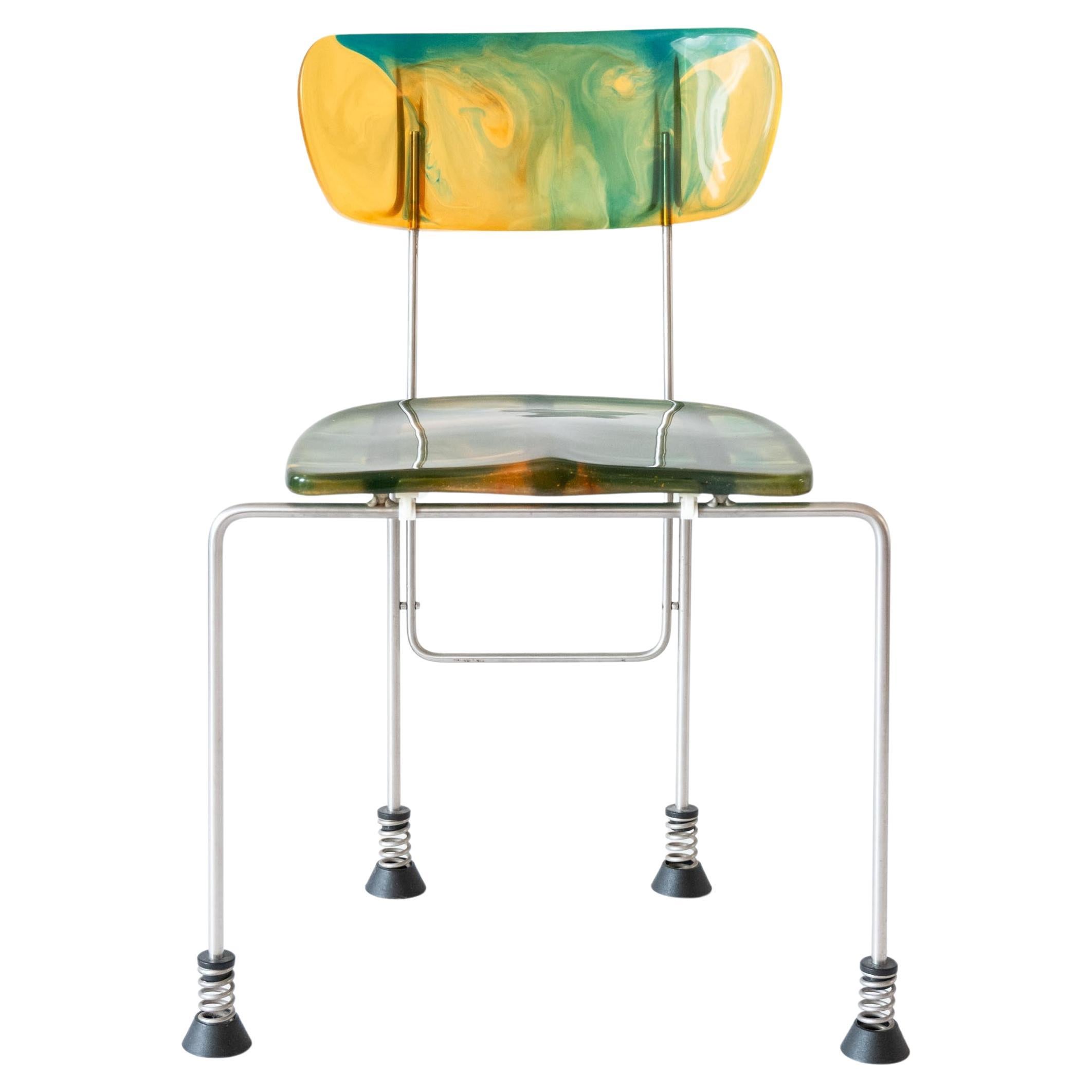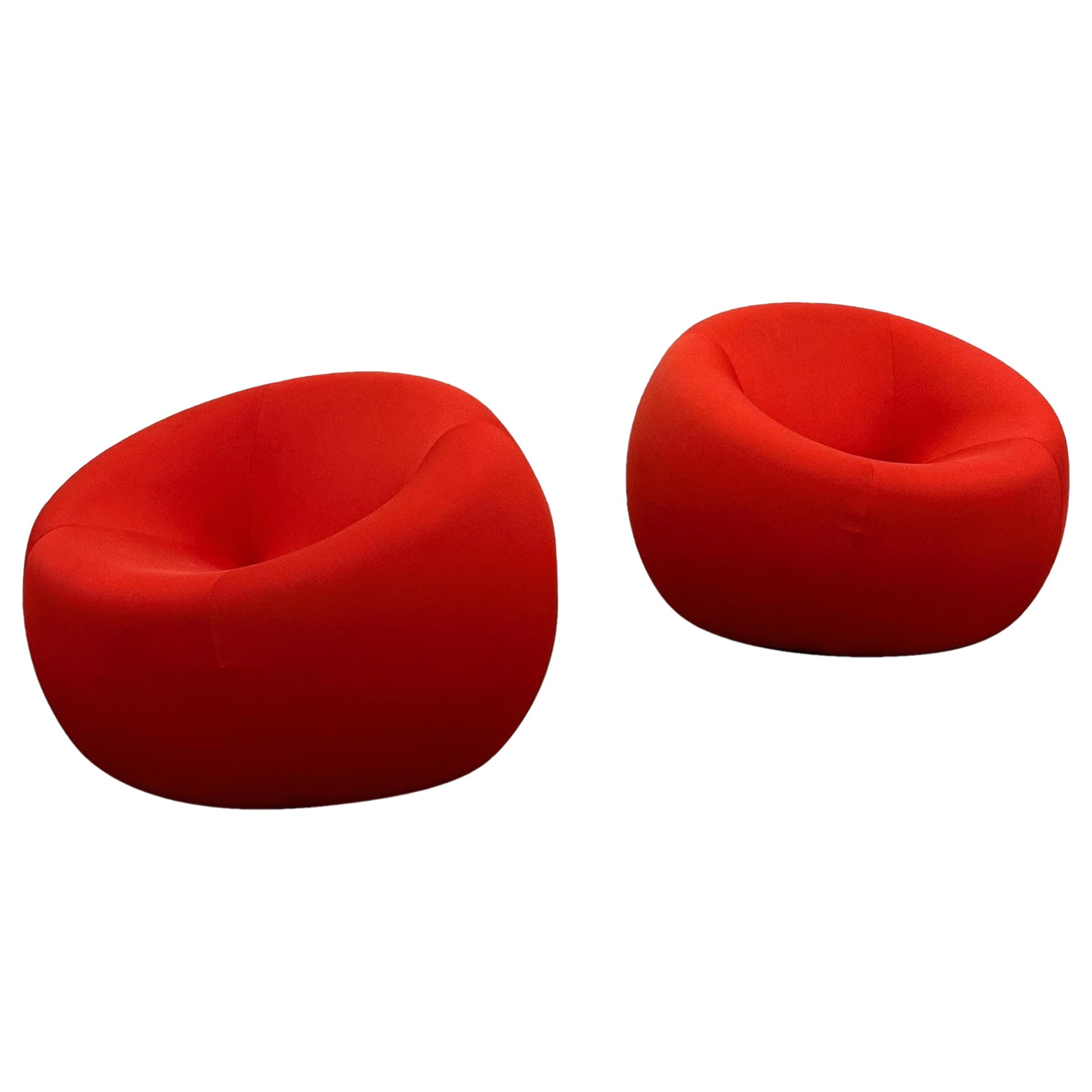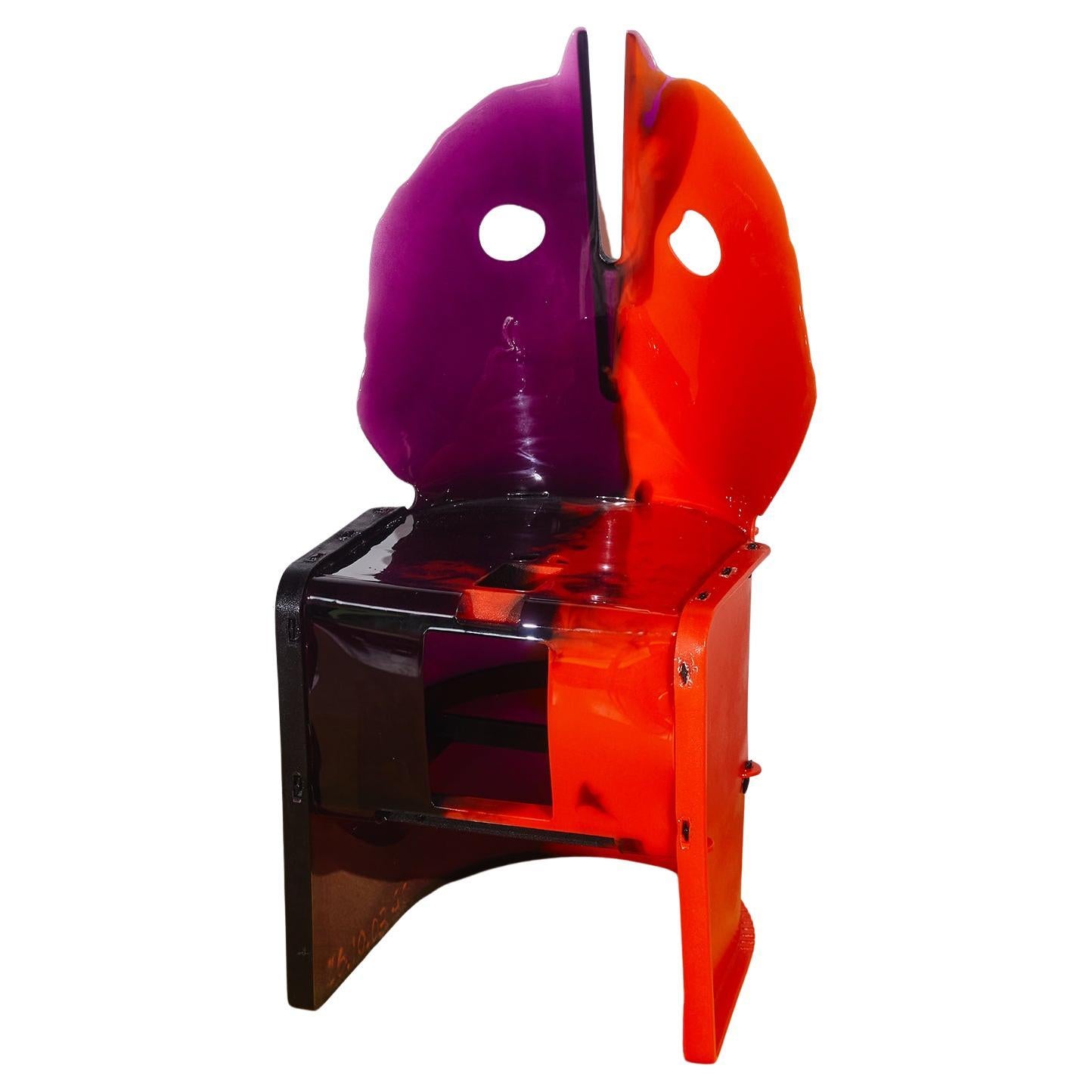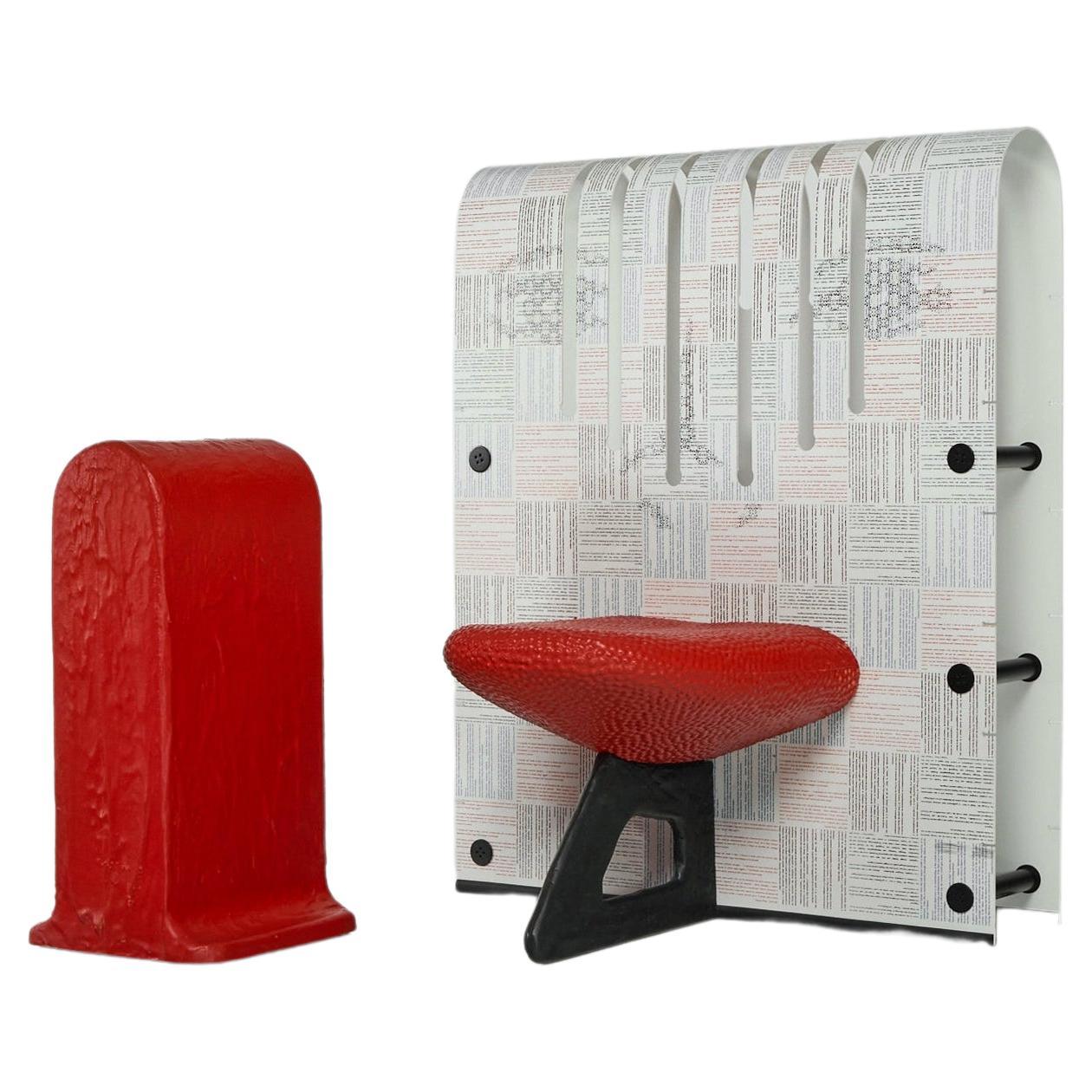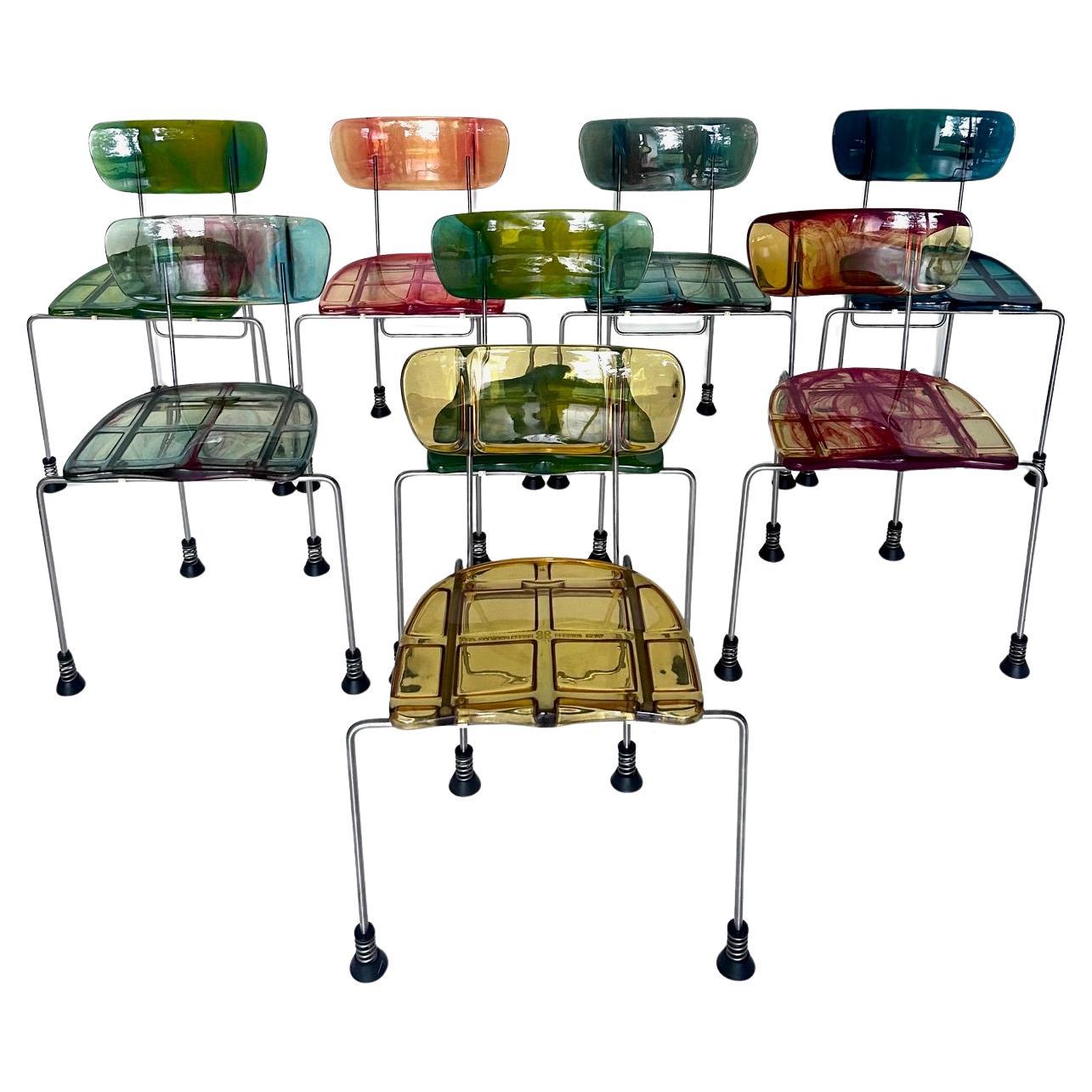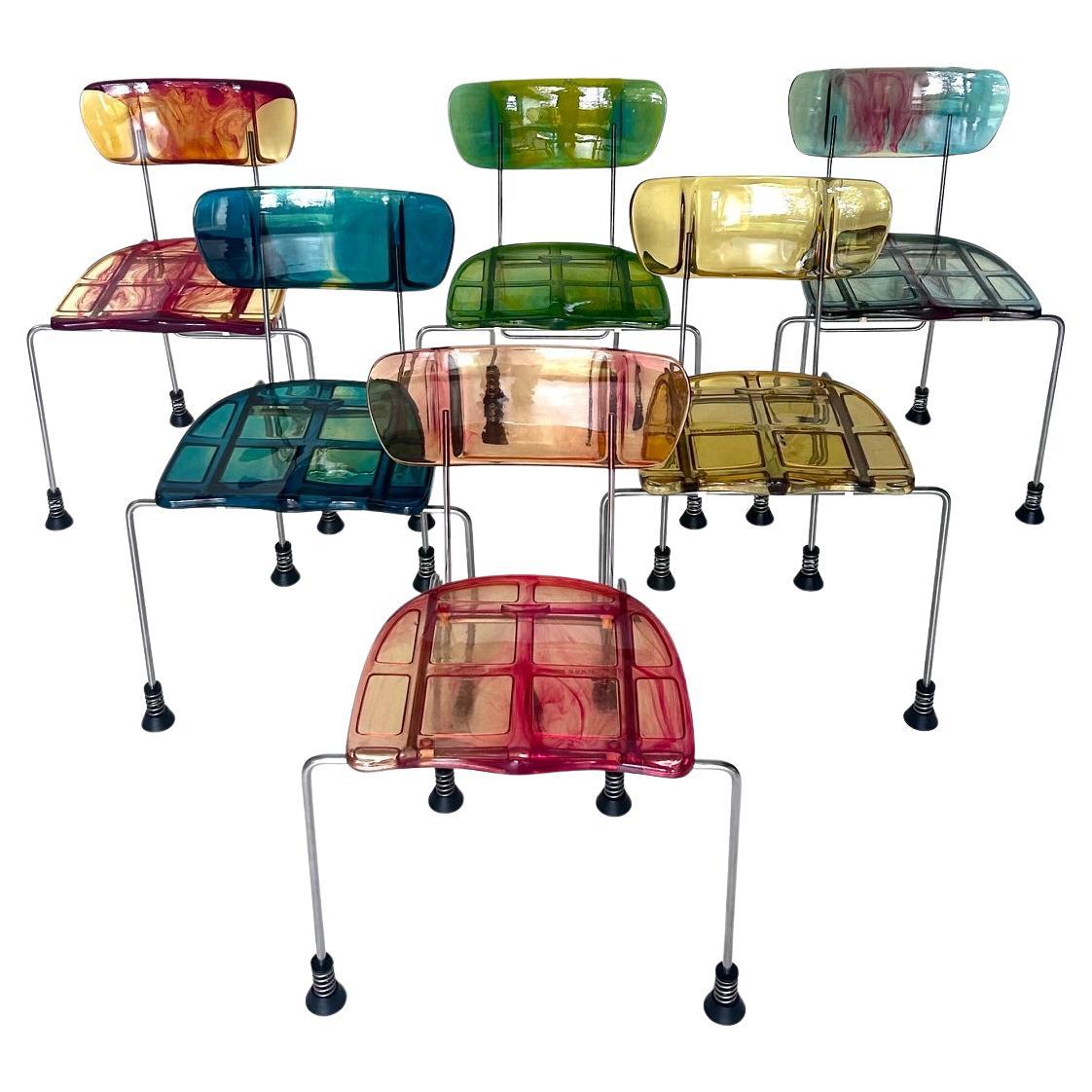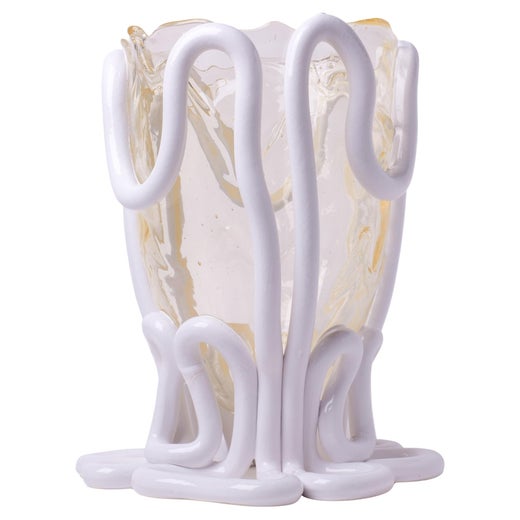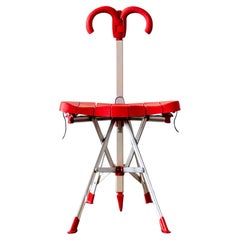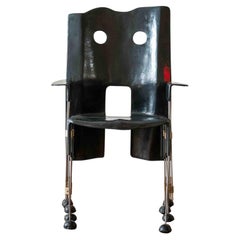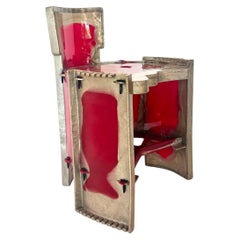
Gaetano Pesce x Bottega Veneta, Come Stai ? Chair
View Similar Items
Gaetano Pesce x Bottega Veneta, Come Stai ? Chair
About the Item
- Creator:Bottega Veneta (Workshop/Studio),Gaetano Pesce (Designer)
- Dimensions:Height: 29.53 in (75 cm)Width: 18.9 in (48 cm)Depth: 20.87 in (53 cm)
- Materials and Techniques:
- Period:
- Date of Manufacture:2022
- Condition:
- Seller Location:Untersiggenthal, CH
- Reference Number:1stDibs: LU7017233152272
Gaetano Pesce
Gaetano Pesce was of a generation of Italian architects who in the early 1960s rebelled against the industrial perfection of modernism by conceiving new furniture and objects that were at once expressive and eccentric in form; or you might say they were more like art than functionalist design.
Born in the picturesque coastal Italian city of La Spezia in 1939, Pesce was a precocious talent who could have forged a career as an artist but opted instead to go to Venice to study architecture because, as he has said, it was “the most complex of all the arts.” Rather than having new worlds opened to him at design school, however, Pesce found the rationalist curriculum oppressive in its insistence on standardization and prescribed materials and technologies.
Pesce wanted to explore the latest of both materials and technologies to create objects and buildings never before imagined, with what he called “personalities” that spoke to the issues of the day. He was keen to examine ways to diversify mass production so that each manufactured work could be distinct.
In 1964, Pesce met Cesare Cassina, of the forward-looking furniture company C&B Italia in Milan (now known as B&B Italia), for whom he would create many important designs, beginning with a collection of what he called “transformational furniture” — two chairs and a loveseat — made entirely out of high-density polyurethane foam. To make the pieces easy to ship and cost-efficient, he proposed that after being covered in a stretch jersey, they be put in a vacuum, then heat-sealed flat between vinyl sheets. Once the foam was removed from its packaging, the piece returned to its original shape — hence, the name Up for the series, which debuted in 1969.
In addition to these pieces, Pesce proposed for the collection something he referred to as an “anti-armchair,” which took the shape of a reclining fertility goddess, the iconic Donna.
Producing the piece's complex form turned out to be a technical challenge. Bayer, the foam’s manufacturer, deemed it impossible to accomplish. Pesce persisted and came up with a new procedure, demonstrating not only the designer’s key role in researching the nature and potential of new materials but also his vital importance in “doubting rules.” The Up chair and accompanying ottoman were born, and they were revolutionary in more ways than one.
In the early 1970s, Pesce began exploring one of his key concepts, the idea of the industrial originals. Employing a mold without air holes, and adding a blood-red dye to the polyurethane, he cast a bookcase that resembled a demolished wall, the rough edges of the shelves and posts resulting from fissures in the material made by trapped air.
Through his research into polyurethane, Pesce figured out a way to make a loveseat and armchair using only a simple wood frame and strong canvas covering as a mold. Since the fabric developed random folds during the injection process, the pieces were similar but not identical. Cassina named the suite of furnishings Sit Down and introduced it in 1975. By experimenting with felt soaked in polyurethane and resin, Pesce conceived I Feltri, another collection of armchairs introduced by Cassina in 1987.
Pesce went on to live a life that defied expectation and convention and along the way became one of the most seminal figures in art and design.
Find vintage Gaetano Pesce chairs, sofas, vases and more on 1stDibs.
Bottega Veneta
Bottega Veneta has garnered acclaim over the course of its long history for impeccable quality and unassuming elegance. Known for its signature intrecciato weave as well as the overall superb craftsmanship that characterizes its handbags, jackets, shoes and other items, the Italian luxury fashion house is revered all over the world.
Bottega Veneta was launched in 1966 in Vicenza, Italy, by Michele Taddei and Renzo Zengiaro. Its artisans worked to produce by hand what were primarily leather goods, and from the start, the label’s focus on traditional craft techniques became integral to its now-global reputation for exceptional design.
Developed by Bottega Veneta in the late 1960s, the intrecciato weaving technique gives the brand’s bags their suppleness and strength. The northeastern Italian region where the label was founded was largely associated with clothing back then, and sewing machines at the local ateliers weren’t intended to be used with the strong leather with which Bottega’s artisans were working in order to create the house’s coveted bags, wallets and other accessories.
The precise weaving technique, which sees strips of fine leather woven by hand into a durable and robust pattern, was a practical solution. The resulting style has become a Bottega Veneta signature, making products such as its iconic Intrecciato Hobo handbag instantly recognizable.
Zengiaro left Bottega Veneta during the late 1970s, and Taddei then turned the brand over to his ex-wife, Laura Moltedo, and her second husband, Vittorio Moltedo. Designs took on a bolder look and the traditional craft approach was prioritized. The brand found success in the United States and expanded rapidly throughout the 1980s, becoming popular with celebrities and the cultural elite. American artist Andy Warhol often frequented the house’s Manhattan boutique and even made a short film for the company.
As competition increased during the 1990s, Bottega Veneta’s popularity declined. The company began to see an upswing after Gucci, which is owned by luxury group Kering, acquired them in 2001. Tomas Maier was appointed creative director by Gucci’s Tom Ford and worked to return to the understated beginnings that had defined the brand’s design ethos.
Maier’s celebrated Knot clutch, which was based on a 1978-era design and debuted in 2001, was a result of his enthusiasm for pared-back design as well as his efforts to showcase the house’s legacy of meticulous craftsmanship. In 2006, Bottega opened Scuola della Pelletteria to train the next generation of leatherworking artisans.
In 2018, British designer Daniel Lee took the role of creative director and earned a number of awards and accolades for the label. Before he left in 2021, Lee introduced an array of universally lauded designs such as Bottega Veneta Tire boots, the Cassette bag and the Mini Jodie, which is named after actress Jodie Foster. Matthieu Blazy was named creative director in 2021 following a history of design work for Celine, Maison Martin Margiela, Calvin Klein and other brands.
Find vintage Bottega Veneta footwear, accessories and clothing on 1stDibs.
You May Also Like
1990s Italian Chairs
Aluminum
Late 20th Century Italian Chairs
Steel
Early 2000s Italian Chairs
Upholstery, Plastic
Early 2000s Italian Chairs
Epoxy Resin
1990s Italian Chairs
Metal
1990s Italian Chairs
Metal
Recently Viewed
View AllRead More
Five of Our Favorite Pieces From the Cooper Hewitt’s Storage
The off-site collection comprises more than 215,000 pieces.
Ruth Lande Shuman’s Manhattan Apartment Is a Happy Rainbow — Thanks to Gaetano Pesce
Over the years, Shuman has filled her Park Avenue penthouse with the Italian designer's radically colorful creations. Here's how it all came to together.
